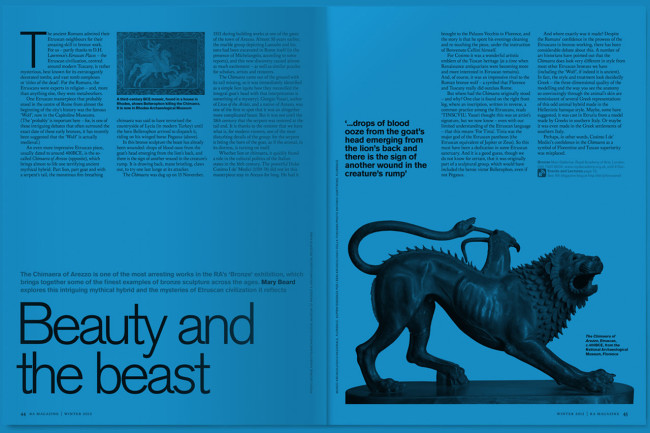Jackson Pollock: pouring his art out
Jackson Pollock: pouring his art out
By Frank Bowling RA
Published 21 May 2015
Leading abstract painter Frank Bowling RA welcomes a major show that reassesses Jackson Pollock’s black pourings.
-
From the Summer 2015 issue of RA Magazine, issued quarterly to Friends of the RA.
Pollock was trying to push the parameters of art-making beyond the Western tradition. By the time he came on the scene in the 1940s, there were conflicting opinions about what exactly an artist did. It had changed from being subservient to the dominant class – painting pictures of leaders, dignitaries and so on – and, as those functions had ebbed away, easel painting had no use any more.
Artists set about finding ways to underline what was valuable about making a painting. Subject matter was put aside, to emphasise the process of making. You could paint on the floor, on the wall, you could spread your paint any which way. Action Painting emphasised the action of the artist in making the work, although that was only part of what was happening – the picture still had to appear on the wall as something novel and inspired. And Pollock was a sharp demonstration of that. He worked on the floor, pouring industrial paint onto blank canvas, dripping it, or using a basting syringe – he was dancing across the canvas, sometimes even leaving his footprints on the work.
-

Jackson Pollock, Number 5, 1952.
© The Pollock-Krasner Foundation ARS, NY and DACS, London 2015.
-
Pollock had enjoyed great success with his drip paintings of 1947-50, some of which are included in a major show of his late work at Tate Liverpool (Summertime: Number 9A, 1948). Yet his black pourings, made between 1951 and 1953, which are the show’s focus, were derided. But Pollock was the kind of guy who just insisted that what he was doing was the way to go. This show tells us that these paintings haven’t had their day and underlines their importance.
In the black pourings Pollock was sometimes letting the paint bleed into bare canvas – and this was a precursor to Colour Field painters, such as Helen Frankenthaler Hon RA. With some of the black paintings he was also pushing figuration to the edge, so that it all became one big drawing (Number 5, 1952). Some of these figures seem to emerge from the unconscious, the marks distributed all over the surface. Pollock held out real inventiveness and inspiration with his black pourings.
The fact that he was derided for these paintings in a way provided a spur for my own work – I fed off his insistence on not giving up on finding enriching ways to proceed. When I left London for New York, in 1966, pouring paint became my way of beginning a work.
Jackson Pollock: Blind Spots is at the Tate Liverpool from 30 June – 18 October 2015.
Frank Bowling: Map Paintings is at the Dallas Museum of Art, Texas until 2 August 2015.
Frank Bowling RA is a painter. His latest exhibition in London is ‘Frank Bowling: Here and Now’ at the Triangle Centre, Chelsea College of Arts (15–24 July).
-
-
Enjoyed this article?
Become a Friend to receive RA Magazine
As well as free entry to all of our exhibitions, Friends of the RA enjoy one of Britain’s most respected art magazines, delivered directly to your door.
Why not join the club?

-





